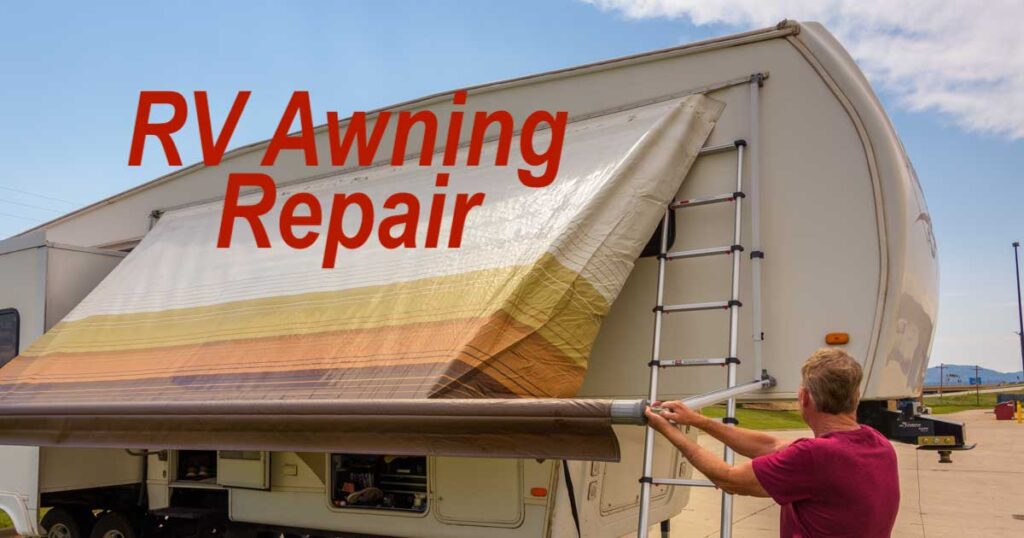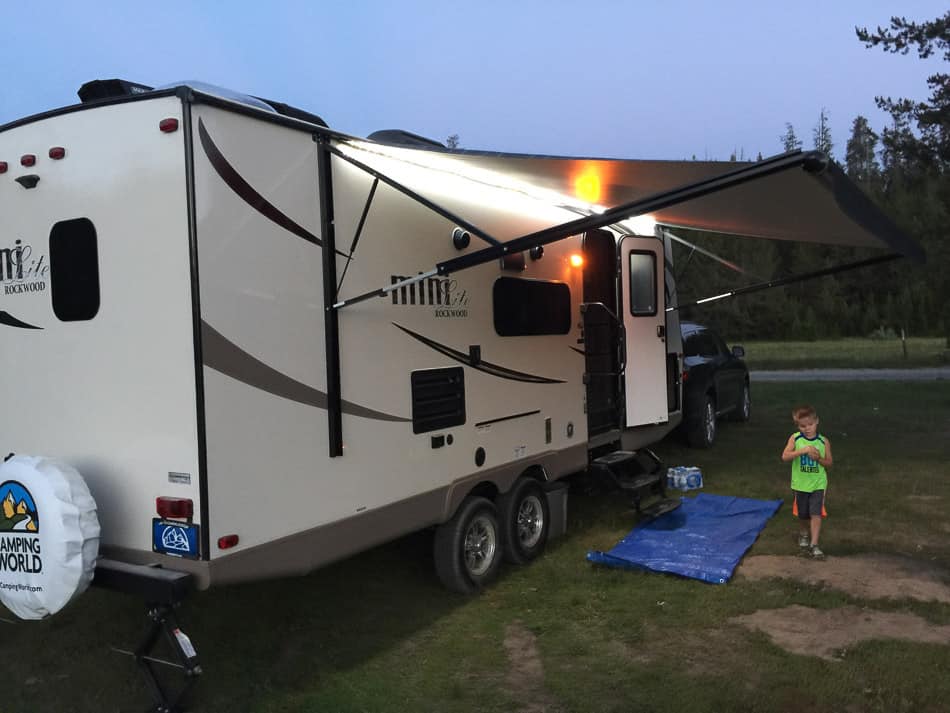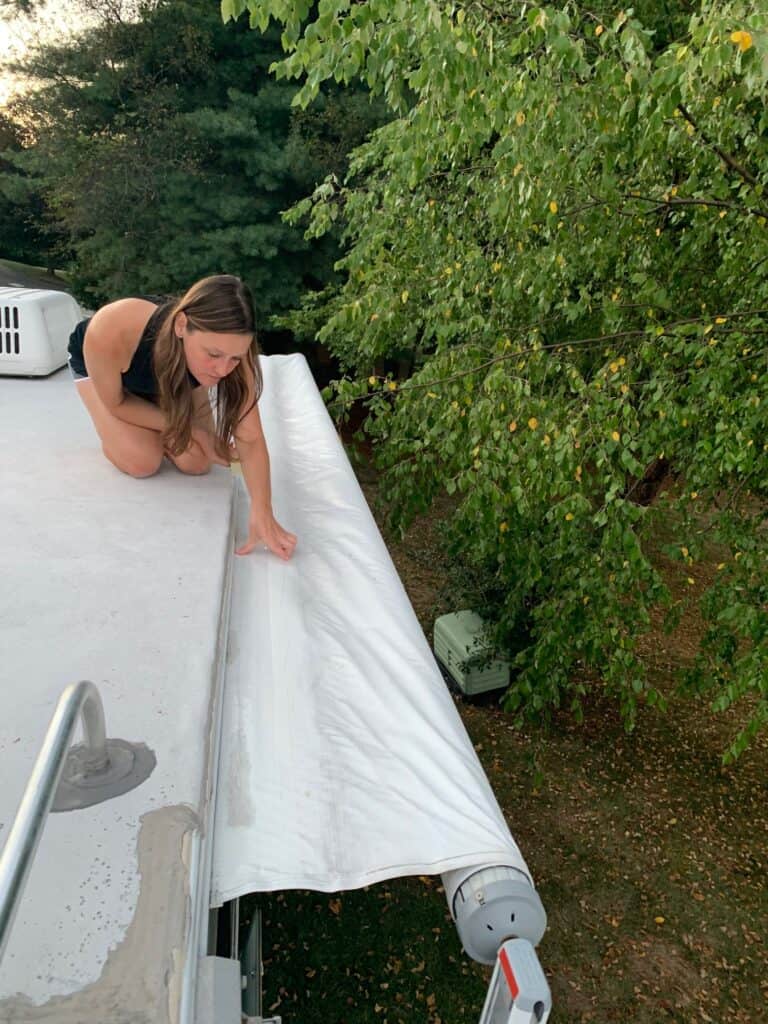All Categories
Featured
Table of Contents
- – Camper Roof Repair Pomona, CA
- – OCRV Center
- – Camper Service Center Pomona, CA
- – Camper Trailer Service Near Me Pomona, CA
- – Camping Repair Near Me Pomona, CA
- – Rv Camper Repair Pomona, CA
- – Camper Repair Pomona, CA
- – Camper Awning Repair Pomona, CA
- – Camper Service Center Pomona, CA
- – Camper Service Near Me Pomona, CA
- – Camper Repair Places Near Me Pomona, CA
- – Pop Up Camper Roof Replacement Pomona, CA
- – Rv Camper Repair Pomona, CA
- – OCRV Center
Camper Roof Repair Pomona, CA
(I didn't have the locking knobs tightened up down.) I didn't see anything amiss, but pulled back both awning simply to be safe. Most campers around us had their awnings released. We returned home the other day in the rainfall, so today I deployed the awnings to dry them out. That's when I uncovered that the rain gutter had been pulled away from the wall surface (and downspout was missing out on) on the ideal hand end of the front awning.
It shows up that about 18 to 24 inches of the steel extrusion (rain gutter) that the awning is glided into has actually pulled away from the wall surface and twisted a little bit - Rv Camper Repair Pomona. I'm presuming the repair will entail replacing that entire size of gutter (10 feet?) and possibly making use of bigger gauge screws to change those that were taken out
We have actually obtained busted brackets on our camper awning. 2 months ago, we had a negative tire blow-out that triggered a curved axle, major repairs, and so on, and we wonder if the braces cracked/broke throughout the bouncy adventure before we realized the axle was in difficulty. We haven't had the awning out because it was in the shop to be repaired.
Camper Service Center Pomona, CA
The awning itself, spring device, and so on, is great. The rear brace setting up is fine, yet the front one is cracked at the bottom and completely appeared at the top, so that the top support arm no more attaches to the camper. We are in trouble. I don't want/like to camp without it.
Even the real assistance arms are undamaged. They are white metal (? The real arms are entirely normal/functionalI'm simply wanting to make certain we're not being taken in out of our desperation (Rv Camper Repair Pomona).
Camper Trailer Service Near Me Pomona, CA
The Motor home is a 2007, but we had rain damages in 2010 and the entire awning was brand new at that time. If absolutely nothing else, we would certainly like suggestions as to exactly how we can "jerry gear" this for a while - possibly also get us via the summer - without having to put in a brand brand-new awning!
If we need to go awning-less, we will, but I 'd instead locate a quick and effective solution. Anybody? Please!.
Invite to my Recreational Vehicle Restoration Collection!.?.!! I'm on step 5 of changing the roof covering of my '93 Fleetwood Jamboree Searcher motorhome. In the last step I got rid of the roofing trim molding from 3 sides of the roof covering. But in order to remove the 4th one, I need to get rid of the RV awning also.
In order to change the rubber roof and roofing system outdoor decking, I require to remove the awning. My RV awning has legs which pivot at the base yet can be gotten rid of to establish on the ground.
Camping Repair Near Me Pomona, CA
You'll likewise discover just how the bracket is hooked on top of the trim molding that holds back the fiberglass panel in the back corner. That's why the awning needs to come off initially prior to the last actions of this blog post (revealing the front and back sides of the roofing system decking).
Right here's a detail of exactly how the awning placing brackets are screwed into the camper. I really did not really need to do this step till the awning was on the ground however I observed this established screw here holding the awning canvas right into the awning rail (there's one more at the right end of the awning.) I went in advance and unscrewed it.
Once both screws are removed, simply draw back on the bracket. Unscrewing the huge lag screws that hold the RV awning mounting brackets to the camper (with an outlet wrench) Removing the placing brace once the lag screws have been unscrewed. Keep in mind how this end was hooked over the discontinuation bar that secures the rounded corner at the rear of the roofing.
Both lag screws gotten rid of from the awning placing brace on the. Getting rid of the placing brace of the awning.
Rv Camper Repair Pomona, CA
To replace the roofing system, this awning bar needs to be eliminated. If you're simply replacing your awning and not fixing the whole roof covering like me, after that you wouldn't require to get rid of the awning rail.
Going down the legs a couple of notches to decrease the entire awning. Currently I can reach this trim molding (the awning rail) quickly.
You may have to reduce the end with an utility knife if it is wrapped under. Simply pull it out! As soon as the plastic screw cover insert was out I removed the screws with a cordless drill and the outlet head from my ratchet screwdriver collection. This went quite quickly.
Once the screws were out I began spying up the awning rail. When I started to tear off the awning rail, the entire point unexpectedly snapped off and rolled up into the awning like a window blind.
Camper Repair Pomona, CA
Feel in one's bones it's coming! Once the screws are gotten rid of, the awning rail can be torn up. You can see the edge of the rubber roofing that was fastened under it. When you begin pulling the awning rail away it will instantly break complimentary and roll up like a home window blind with the awning.
This point is hefty so if you're working alone like me after that decrease it the ground gradually by walking the legs far from the camper on each side individually up until you can lay it on the ground. Then I turned the legs back up and out of the method against the camper.

These screws maintain the awning canvas from moving in the rail. Once they're gotten rid of the rail just glides right off the canvas by sliding the whole rail to one side.
Camper Awning Repair Pomona, CA
As soon as the two set screws were eliminated I could slide the whole awning rail right off the awning. An additional look at the account of this trim molding (the awning rail) after it was removed.
The following thing holding down the recreational vehicle fiberglass house siding panels is the edge trim molding shown right here. It has a vinyl screw cover strip put, so again I simply pried up the plastic insert and pulled out enough so I might loosen some screw heads.
Nonetheless I might end up eliminating it later if I need to replace the luan plywood underneath this fiberglass shift. The roofing system decking plywood prolongs under the fiberglass skin at the back of the camper. In order to change it, this fiberglass change have to be raised. To lift that, the corner molding should be gotten rid of.
I might turn the trim mold and mildew off the side enough to lift up the edge of the fiberglass panel. Once I can turn that piece of corner molding off the side, I started to pry up the fiberglass panel. It has adhesive under it and little bits of rusted staples and sheared off screws still holding it in position.
Camper Service Center Pomona, CA
I switched over from a scraper to a stiff 6 wide putty knife. This item damaged out of the fiberglass panel when I was attempting to tear it up. Then I switched from a scrape to 6 inch broad taping knife. I loosened the other corner trim in the same means, and bent it sideways simply sufficient so that I can raise up the side of the fiberglass panel.
I located a lot of water damage in the plywood under the fiberglass panel so I'll probably be replacing it. Which suggests I'll end removing those edge trim pieces all the method down. We'll get to that later. I had a considerable amount of water damage in the joint between the rounded corner and the roofing deck.
Camper Service Near Me Pomona, CA
The side of the roof covering outdoor decking is subjected at the back of the camper! I have actually revealed the roof covering substratum at the back edge of the camper. Now its time to find the front edge.
Once again, I pried that layer up too (there had not been much stifling however adhesive at this point) and afterwards I can pull out the rest of the rubber roofing that was glued below it. Now I can take out the last little bit of rubber roof from beneath the fiberglass and luan plywood.
Camper Repair Places Near Me Pomona, CA
I observed there were no bolts holding the roof covering plywood down. It was simply glued. I began meticulously peeling it up. I can see heaven styrofoam insulation underneath the damaged locations of luan plywood on the roofing. Notification there are no bolts whatsoever holding back the roofing plywood! It is entirely glued.
When I scratched up several of the damaged bits I got hold of a solid item of plywood and started to draw. The entire point began to bring up cleanly intact without harming the foam board insulation whatsoever. Now I can see the steel framework beneath. After that the plywood began peeling up as one piece, leaving all the styrofoam well undamaged.
There is a metal reinforced tape under that joins the pieces with each other. I do not understand how exactly they handled to glue everything down so well and obtain this tape joining them from the underside, but it was perfectly done. The pieces of roof ply are collaborated at the joints below with a metal-reinforced tape.
Pop Up Camper Roof Replacement Pomona, CA
I quickly understood the roofing was shedding stamina and tightness as I brought up the leading layer, so broke it off prior to the initial seam. A close up of the metal framing in the roofing: one inch wide, one and a half inches high. Here's an information of the wiring in the insulation foam and the solid timber reinforcements where the antennas screw into the roof covering.

I found a number of water damages in the plywood under the fiberglass panel so I'll most likely be changing it. Which means I'll finish removing those edge trim pieces right down besides. Yet we'll reach that later. I had a significant amount of water damages in the joint between the rounded corner and the roof deck.
The side of the roofing decking is exposed at the back of the camper! I've subjected the roof covering substrate at the back side of the camper. Now its time to find the front side.
Once again, I pried that layer up also (there had not been much holding it down however adhesive at this moment) and afterwards I could yank out the remainder of the rubber roofing that was glued beneath it. Rv Camper Repair Pomona. Now I can pull out the last little rubber roof from underneath the fiberglass and luan plywood
Rv Camper Repair Pomona, CA

I discovered there were no fasteners holding the roofing plywood down. It was simply glued. So I started very carefully peeling it up. I could see heaven styrofoam insulation beneath the damaged areas of luan plywood on the roof. Notification there are no fasteners whatsoever holding down the roofing plywood! It is completely glued.
As soon as I scraped up some of the damaged bits I got hold of a solid item of plywood and began to pull. The whole point started to pull up easily unscathed without damaging the foam board insulation in any way. Now I can see the steel framing below. Then the plywood started peeling off up as one item, leaving all the styrofoam well undamaged.
There is a metal strengthened tape under that joins the pieces with each other. I do not recognize just how specifically they handled to glue every little thing down so well and obtain this tape joining them from the bottom, however it was perfectly done. The items of roofing ply are signed up with together at the joints below with a metal-reinforced tape.
I quickly understood the roof was losing stamina and stiffness as I pulled up the leading layer, so fractured it off just before the initial joint. A close of the metal framing in the roofing system: one inch wide, one and a fifty percent inches tall. Right here's a detail of the circuitry in the insulation foam and the solid timber supports where the antennas screw right into the roof.
Camper Roof Replacement Pomona, CACamper Services Pomona, CA
Camper Trailer Service Near Me Pomona, CA
Camper Awning Repair Pomona, CA
Camper Repair Shop Pomona, CA
Pop Up Camper Roof Repair Pomona, CA
Camping Repair Near Me Pomona, CA
Pop Up Camper Repair Pomona, CA
Camping Repair Near Me Pomona, CA
Camper Awning Repair Pomona, CA
Pop Up Camper Roof Repair Pomona, CA
Camper Air Conditioner Repair Near Me Pomona, CA
Camping Repair Near Me Pomona, CA
Rv Camper Ac Repair Pomona, CA
Camper Repair Near Me Pomona, CA
Rv Camper Repair Pomona, CA
Pop Up Camper Roof Repair Pomona, CA
Camper Awning Repair Pomona, CA
Camper Trailer Service Near Me Pomona, CA
Camping Repair Near Me Pomona, CA
Camping Repair Near Me Pomona, CA
Camper Trailer Repair Pomona, CA
Pop Up Camper Roof Repair Pomona, CA
Camping Repair Near Me Pomona, CA
Camper Service Pomona, CA
Camper Trailer Service Near Me Pomona, CA
Camper Trailer Repair Near Me Pomona, CA
Camper Service And Repair Pomona, CA
Camper Repair Shops Near Me Pomona, CA
Camper Repair Near Me Pomona, CA
Camper Services Pomona, CA
Camper Trailer Repair Near Me Pomona, CA
Camper Repair Shop Pomona, CA
Camper Repair Shop Pomona, CA
Rv Camper Ac Repair Pomona, CA
Camper Awning Replacement Pomona, CA
Camper Trailer Service Near Me Pomona, CA
Camper Air Conditioner Repair Near Me Pomona, CA
Camper Repair Places Near Me Pomona, CA
Camper Roof Repair Pomona, CA
Camper Services Pomona, CA
Camper Repair Places Near Me Pomona, CA
Camper Service Pomona, CA
Pop Up Camper Roof Repair Pomona, CA
Camper Trailer Repair Near Me Pomona, CA
Camper Repair Shop Pomona, CA
Camper Service Near Me Pomona, CA
Camper Trailer Repair Pomona, CA
Camper Roof Repair Near Me Pomona, CA
Camper Service Near Me Pomona, CA
Camper Service Pomona, CA
Pop Up Camper Roof Replacement Pomona, CA
Camper Repair Places Near Me Pomona, CA
Camper Trailer Repair Near Me Pomona, CA
Camping Repair Near Me Pomona, CA
Camper Awning Repair Pomona, CA
Camper Trailer Service Near Me Pomona, CA
Pop Up Camper Repair Pomona, CA
Camper Service Pomona, CA
Camper Repair Places Near Me Pomona, CA
Camper Repair Shops Near Me Pomona, CA
Rv Camper Repair Pomona, CA
Pop Up Camper Repair Pomona, CA
Pop Up Camper Repair Pomona, CA
Camper Repair Near Me Pomona, CA
Camper Service And Repair Pomona, CA
Camper Repair Shop Pomona, CA
Camper Awning Repair Pomona, CA
Pop Up Camper Repair Near Me Pomona, CA
Camper Roof Replacement Pomona, CA
Camper Service And Repair Pomona, CA
Camper Roof Repair Near Me Pomona, CA
Pop Up Camper Repair Near Me Pomona, CA
Camper Awning Replacement Pomona, CA
Pop Up Camper Roof Replacement Pomona, CA
Pop Up Camper Canvas Repair Pomona, CA
Camper Service Center Pomona, CA
Camper Awning Replacement Pomona, CA
Around Here Seo Service Pomona, CA
Near My Location Seo Packages Pomona, CA
OCRV Center
Table of Contents
- – Camper Roof Repair Pomona, CA
- – OCRV Center
- – Camper Service Center Pomona, CA
- – Camper Trailer Service Near Me Pomona, CA
- – Camping Repair Near Me Pomona, CA
- – Rv Camper Repair Pomona, CA
- – Camper Repair Pomona, CA
- – Camper Awning Repair Pomona, CA
- – Camper Service Center Pomona, CA
- – Camper Service Near Me Pomona, CA
- – Camper Repair Places Near Me Pomona, CA
- – Pop Up Camper Roof Replacement Pomona, CA
- – Rv Camper Repair Pomona, CA
- – OCRV Center
Latest Posts
Pomona Cargo Trailer Repair
Ontario Handicap Van Repair Near Me
Travel Trailer Replacement Windows Atwood
More
Latest Posts
Pomona Cargo Trailer Repair
Ontario Handicap Van Repair Near Me
Travel Trailer Replacement Windows Atwood